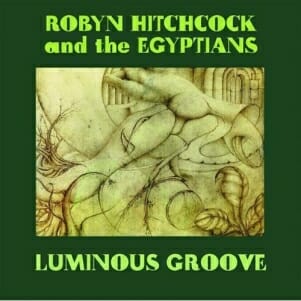Robyn Hitchcock and The Egyptians: Luminous Groove

Another trip inside the British psych-rocker’s vault
In the early ’80s, a record-store clerk in a sleepy Southern college town discovered Robyn Hitchcock via the English singer/songwriter’s band The Soft Boys. While a product of the punk era, The Soft Boys trafficked in a deeply unfashionable blend of psychedelia and jangly ’60s-style pop. Hitchcock, the band’s lyricist, sidestepped both politics and rote boy/girl pop narratives, opting instead for cracked, surrealist metaphors that were equal parts Syd Barrett’s twee madness and Bob Dylan’s stream-of-consciousness wordplay—all delivered with a voice like a loopier John Lennon.
The Soft Boys’ overlooked classic, 1980’s Underwater Moonlight, was a revelation to the clerk at Athens, Ga.’s Wuxtry Records: R.E.M. guitarist Peter Buck, whose young band would glean much from The Soft Boys’ approach. By the time Hitchcock released 1988 solo album Globe Of Frogs (which cemented his U.S. cult following), Buck was one of his occasional sidemen-—a role he still plays.
In between The Soft Boys’ run and Hitchcock’s late-’80s college-radio hit “Balloon Man,” the songwriter hit his stride as a solo artist. After the largely acoustic I Often Dream Of Trains, he partially reformed The Soft Boys, corralling bassist Andy Metcalfe and drummer Morris Windsor to form The Egyptians. The group then recorded Fegmania!, the live album Gotta Let This Hen Out! and Element Of Light during a creatively fertile—and exclamation-mark-studded—two-year stretch. This period is the focus of Luminous Groove, Yep Roc’s new five-disc Hitchcock reissue box. In addition to the original three discs, previously unreleased material forms more than half of the set’s total running time.
-

-

-

-

-

-

-

-

-

-

-

-

-

-

-

-

-

-

-

-

-

-

-

-

-

-

-

-

-

-

-

-

-

-

-

-

-

-

-

-








































